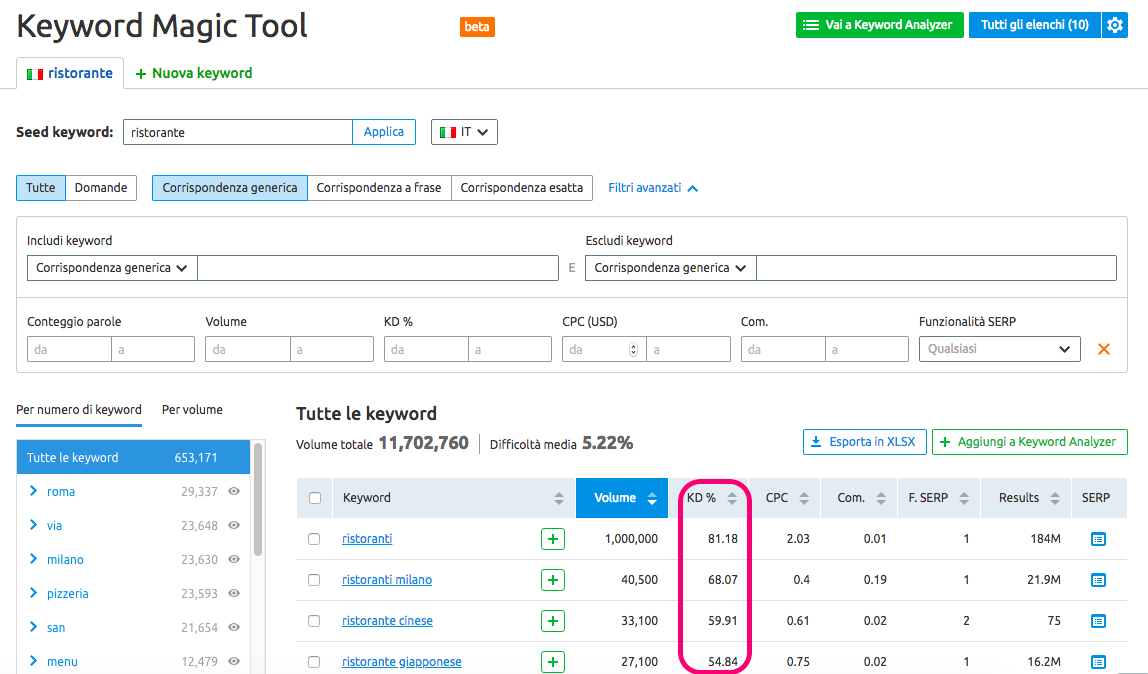SEO for Small and Medium-Sized Companies

The importance SEO has gained in recent years has led many people to focus on this quasi-“mystical” field. It is no coincidence that some believe it is the exclusive prerogative of SEO agencies and webmasters.
Yet small businesses can also develop an effective SEO strategy without necessarily having to resort to outside help.

From developing integrations to strategic support, from creating creative concepts to optimizing results.
For small entrepreneurs, being able to rely on an SEO strategy provides some indisputable advantages. In the first place, they can expand their customer base, giving the brand renewed strength, guaranteeing more traffic to the site, generating interest in the public and creating “buzz” around an activity.
Even for start-ups, SEO can be a great opportunity for growth over time.
SEO for SMBs: which areas should you focus on?
When planning an SEO strategy, the most difficult part is the succession of actions to be carried out. Establishing an action plan, or a workflow, can be very useful.
Optimizing your site for organic searches: the most common errors
What does optimizing a website mean? Firstly, try to avoid the most common mistakes. The most widespread mistakes relate to internal link management: it is only when links are useful, i.e. they represent a significant furthering of information, that search engines get complete information on the topics present in a site’s pages. Therefore, paying special attention to internal links will create a well-organized structure in which the Google spiders – who enter a site to gather information about it – will be able to move easily, giving the engine a positive signal for positioning. The user experience will also benefit from this, as it will create a relevant and easy to follow path.
On-page positioning factors
There are certain elements that a website owner can directly optimize because they are on the page, hence the terms on-page or on-site factors. Let’s take a brief look at them:
- Url: an optimized url firstly respects the tree scheme the site was built on, showing the hierarchical path that lets you reach the requested resource (ex: www.shoesite/womens-shoes/gucci-shoes/). The url has semantic value, so you must include the significant keywords for the page it refers to. At the user level, the advice is that the url be brief and “talk” (i.e. it clearly infers the content that will be displayed).
- Page Title: the title of the page that appears in the browser is very important for Google. It must contain the page’s main keyword. The semantic weight descends from left to right (the key words must be inserted at the beginning). This is the title that appears in SERP.
- Metadescription: this is the description of the page’s content; it does not directly influence positioning (it is not a ranking factor), but is relevant for the CTR in SERP (if the description is interesting, the user will click on the result).
- H1: this is the title of the page, not to be confused with the Page Title. These two elements often coincide, and this is not a mistake, but the best way to fully exploit them is by making sure that they are correlated but not identical. The Page Title has a much more marked SEO value, while the H1 can be used by a good copywriter to capture the reader’s attention (in fact, this is the title that is shared by default when you post on Facebook).
- Images: image optimization is also important for good page positioning. The fields to focus on are the name of the image, the Alt and the Title. If possible, always compress the image before uploading it (making sure that the quality of the image is not affected), as this helps guarantee good site loading speed, a factor that Google considers increasingly crucial for the positioning of a page.
- Page formatting: to ensure a good user experience, and therefore greater time spent on the site and lower rebound frequencies, a page’s content must be visually pleasing: an entire page of text, for example, is not inviting to those looking for information on a site (especially if it is displayed from a mobile). Therefore the advice is to structure the text in paragraphs, use bold and italics to emphasize interesting points on the page, and break up the text with images, quotes, and multimedia content such as videos, etc.
Content duplication and the HTTPS protocol
In terms of content, it is important that different pages don’t have the same text: this is a very frequent mistake – especially in e-commerce – that has a strong impact on a page’s positioning in search engine results.
You should also pay attention to the correct implementation of the HTTPS protocol, which is used by a growing number of companies and strongly recommended by Google, and to content optimization for mobile devices, since the data confirms that views from mobile devices are constantly growing and have already surpassed those from desktops.

GIF from SEMrush’s Site Audit
Build image thanks to Backlinks, Influencers, and PR
Now that we’ve looked at the on-page factors that affect a site’s positioning, let’s look at how a small-medium business can improve its site’s positioning in search engines through off-page SEO. A company that has just entered the market must be able to count on the combined contribution of backlinks, PR, and social signals.
As regards digital public relations, you must consider that more than 80% of consumers consider word of mouth an effective promotional tool, so managing to convince opinion leaders to promote an activity can prove to be a winning strategy.
As regards signals from social networks, many believe that we can’t (yet) consider them direct factors in ranking, but one thing that cannot be underestimated is that even here, Google can monitor a buzz around a brand or a site and take this into account when it establishes the authoritativeness of a page.
As regards link building, you should know that Google considers links as signs of esteem: if many sites link a page, this means that the community considers the resource valuable, thus the SERP will reflect this appreciation, giving the page visibility that is proportional to the positive signals received.
Do all links have the same weight? No. This is where off-page optimization comes into play. The links that Google deems most valuable are:
- those coming from authoritative sites
- those coming from sites with the same theme as the linked site
Other elements that add points are:
- the number of sites that link to a page
- the links’ anchor text (it must be semantic and various)
- the link’s position within the page
An optimal link building strategy – or better yet, Link earning – must be as natural as possible.
A good keyword search is the foundation of every positioning strategy
The search for keywords will help you in two ways: improving the content which is already present in the site pages, and providing ideas for future text. Identifying the target keywords of your business and those your competitors use is essential.
A company that starts from scratch should avoid immediately focusing on the most competitive keywords, or those that have the highest search volumes but also the greatest keyword difficulty; the Keyword Magic tool by SEMrush accurately indicates this value to make SEO aware of how difficult it is to get a better ranking than competitors for that keyword.
The best thing to do is try to position your site with long tail keywords (those with more than three words) that have lower search volumes but are easier to conquer. There will clearly be less traffic brought in by these keywords, but you must also consider that they are more specific and can bring a more specific target.

Image from SEMrush’s Keyword Magic tool
And an emphasis on a snippet?
Grasping a “zero position” means taking advantage of a good opportunity to appear above your competitors in search engine results. For a small or medium-sized company, success could be linked to presence in SERP Features.
To reach a featured snippet, you must know how to optimize your site. If your content precisely answers a question, your page may appear in the zero position at the top of the SERP. You should also pay attention to formatting, making the best of bullet points and paragraph titles.
Wrap up
Although it may seem complicated and in some senses abstract (sometimes it takes months to see the effects of a good optimization strategy in SERP), SEO has the potential to help your business grow in the most fragile and crucial phases of its development.
Following some basic steps and taking care to create useful content for users, always accompanied by a good user experience, even small to medium-sized companies can earn good positioning in Google search pages, thereby gaining target traffic which leads to conversions.
Do you still have doubts about how to take advantage of SEO for an SMB? Write me below in the comments and I’ll try to help!
